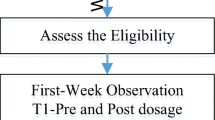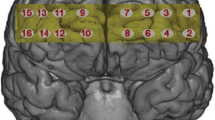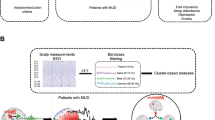Abstract
Rationale: Despite animal studies implicating 3,4-methylenedioxymethamphetamine (MDMA or Ecstasy) in serotonergic neurotoxicity, there is little direct evidence of changes in neural function in humans who use MDMA as a recreational drug. Objective: The present study investigated whether there is a correlation between quantitative EEG variables (spectral power and coherence) and cognitive/mood variables, and level of prior use of MDMA. Methods: Twenty-three recreational MDMA users were studied. Resting EEG was recorded with eyes closed, using a 128-electrode geodesic net system, from which spectral power, peak frequency and coherence levels were calculated. Tests of intelligence (NART), immediate and delayed memory, frontal function (card sort task), and mood (BDI and PANAS scales) were also administered. Pearson correlation analyses were used to examine the relationship between these measures and the subject’s consumption of MDMA during the previous 12-month period. Partial correlation was used to control for the use of other recreational drugs. Results: MDMA use was positively correlated with absolute power in the alpha (8–12 Hz) and beta (12–20 Hz) frequency bands, but not with the delta (1–3 Hz) or theta (4–7 Hz) bands. MDMA use was negatively correlated with EEG coherence, a measure of synchrony between paired cortical locations, in posterior brain sites thought to overly the main visual association pathways of the occipito-parietal region. MDMA use did not correlate significantly with any of the mood/cognitive measures except the card sort task, with which it was weakly negatively correlated. Conclusions: Alpha power has been shown to be inversely related to mental function and has been used as an indirect measure of brain activation in both normal and abnormal states. Reduced coherence levels have been associated with dysfunctional connectivity in the brain in disorders such as dementia, white-matter disease and normal aging. Our results may indicate altered brain function correlated with prior MDMA use, and show that electroencephalography may be a cheap and effective tool for examining neurotoxic effects of MDMA and other drugs.
Similar content being viewed by others
Author information
Authors and Affiliations
Additional information
Received: 19 October 1998/Final version: 12 January 1999
Rights and permissions
About this article
Cite this article
Dafters, R., Duffy, F., O’Donnell, P. et al. Level of use of 3,4-methylenedioxymethamphetamine (MDMA or Ecstasy) in humans correlates with EEG power and coherence. Psychopharmacology 145, 82–90 (1999). https://doi.org/10.1007/s002130051035
Issue Date:
DOI: https://doi.org/10.1007/s002130051035




